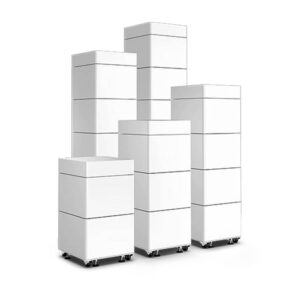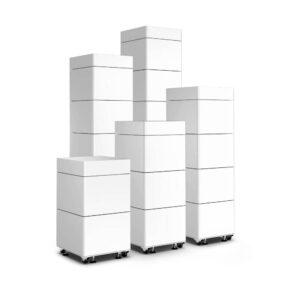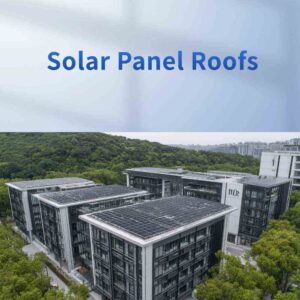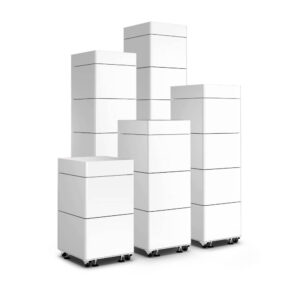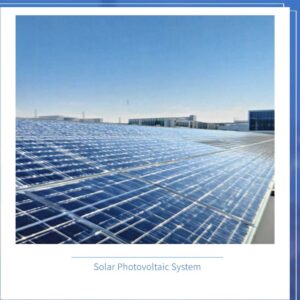Solar photovoltaic system technologies change quickly. Crystalline silicon PV is popular because it works well and costs less. Perovskite solar cells are becoming more common since they are light and bend easily. Building-integrated photovoltaics let you put solar panels on roofs and walls for clean energy.
If you want to know how many people use solar now, look at these facts:
| Statistic | Value |
|---|---|
| Total installed solar capacity | 163,452.3 megawatts |
| Number of homes with solar panels | 4,724,340 |
| Residential net-metered solar capacity | 33,704 MW |
| Average home solar installation size | 7.13 kilowatts |
You can find new ways to save money, use energy better, and help the planet.
الوجبات الرئيسية
- Crystalline silicon panels are the most used for solar energy. They work well and do not cost too much. Next-generation solar technologies, like perovskite cells, may work even better. They could cost less to make. This could change the market a lot. Thin-film solar panels are light and flexible. They are good for special uses, like curved surfaces or portable devices. Smart solar systems can connect to the grid. They use IoT technology to help save energy. They can make systems work up to 20% better. Picking the best solar system depends on your space and budget. You should think about how much energy you need. Look at things like efficiency, cost, and if you can add more later.
Solar Photovoltaic System Types
When you look at solar photovoltaic system choices, you see a few main types. Each type is different in how it works, what it costs, and where you use it. Here is a simple summary:
| Technology Type | Market Share Trend |
|---|---|
| Mono-Si | Growing the fastest |
| Multi-Si | N/A |
| Thin Film | N/A |
Crystalline Silicon
Crystalline silicon panels are used the most. You can pick mono-crystalline or multi-crystalline panels. Mono-crystalline panels work very well, with 20% to 25% efficiency. They look nice and fit in small spaces. Multi-crystalline panels use many silicon crystals. They cost less but do not work as well. Both types are popular and keep getting more common.
Note: Crystalline silicon panels have bigger impacts when made, but the difference between single and multi-crystalline is small.
Thin-Film
Thin-film panels use materials like amorphous silicon or cadmium telluride. These panels are light and can bend. You can put them on curved roofs or buildings. Thin-film panels do not work as well, with 10% to 16% efficiency, but they do better in hot places. In 2024, thin-film panels are expected to lead the market. Cadmium telluride panels are better for the environment when made, but they do not last as long.
Concentrating Photovoltaic (CPV)
CPV systems use lenses or mirrors to focus sunlight on small, strong cells. CPV gives the best efficiency, but it is hard to set up and costs more. These systems work best where there is a lot of direct sunlight. Not many people use CPV yet because it costs a lot and is hard to install.
Next-Gen Technologies
Next-generation solar cells include perovskite, dye-sensitized, and organic PV. Perovskite cells work at about 20% efficiency and are cheap to make. These new types may work better and cost less, but they still have problems with lasting a long time.
- You can use solar photovoltaic system types in many ways:
- Ground mounted
- Roof mounted
- On-grid
- Off-grid
- Residential
- Non-residential
- Utilities
Monocrystalline Trends
Efficiency Gains
Monocrystalline solar cells are getting much better now. New materials and smart designs help them work better. Perovskite materials made efficiency jump from 3.8% in 2009 to over 25% in new tests. Some tandem cells can go above 29%. Special textures and coatings on the surface stop light from bouncing away. This can make the panels work up to 10% better. PERC technology started in the 1980s. It helps the cells take in more light and lose fewer electrons. New wafer designs may make them even better soon. The table below shows the main improvements:
| Advancement Type | الوصف |
|---|---|
| Perovskite Materials | Efficiency improved from 3.8% in 2009 to over 25% in recent tests; tandem cells exceed 29%. |
| Surface Texturing and Coatings | Performance improved by up to 10% by reducing reflection losses. |
| PERC Technology | Better light absorption and less electron loss since the 1980s. |
| Advanced Wafer Designs | Research shows potential for higher efficiency. |
| Perovskite-Silicon Tandem Cells | Theoretical efficiency limits above 30% are possible. |
Note: These changes mean you get more power from the same sunlight. Monocrystalline panels are a smart pick for homes and businesses.
Market Impact
More people are picking monocrystalline panels for their homes and businesses. Homeowners like them because they work well, even in sunny places. Many people use batteries with their solar panels. This lets them use more of their own power and depend less on the grid. Businesses also like these panels because they get more value for their money. Countries like the United States, China, and Japan want more energy independence, so demand is high. The table below shows these trends:
| Sector | الوصف |
|---|---|
| Residential Adoption | Homeowners pick monocrystalline panels for high efficiency, especially in sunny regions. |
| Solar-plus-Storage | Pairing with batteries increases utility and reduces grid reliance. |
| Commercial Preference | Businesses choose these panels for better investment returns. |
| Global Demand | High demand in the US, China, and Japan for energy independence. |
There are some problems with these systems. Some products, like solar windows, do not have strong warranties yet. Building-integrated solar panels can be hard to fix or replace. Supply chains for new products are not always steady. It can also be hard to find good information or compare new products to old ones. Still, as more people learn and see big projects work, more will start using these options.
Polycrystalline Overview
Cost Benefits
Polycrystalline panels usually cost less than other types. They use less rack steel and fewer clamp fasteners for each panel. You can see the differences in this table:
| Cost Item | Monocrystalline Panel | Polycrystalline Panel |
|---|---|---|
| Rack Steel Usage | 38kg/㎡ | 32kg/㎡ |
| Clamp Fasteners | 12 sets/panel | 8 sets/panel |
| Anti-Vibration Washers | Must use EPDM | Regular rubber okay |
Polycrystalline panels are simple to put in place. Sometimes, one person can install them, so you pay less for labor. Monocrystalline panels need workers with special training, which costs more. Polycrystalline panels do not need pricey anti-PID steps. This makes them a good pick if you want to save money on your solar photovoltaic system.
Tip: Many government programs help you save even more money. Tax credits and rebates make solar cheaper. In the United States, home solar grew by 70% in five years, and polycrystalline panels helped a lot. The European Union also supports solar, so polycrystalline panels are getting more popular.
Efficiency Factors
Polycrystalline panels are not as efficient as monocrystalline panels. But they still work well for many people. Here is how they compare:
- Monocrystalline solar cells: 14% to 18% efficiency.
- Polycrystalline solar cells: 12% to 14% efficiency.
- Thin-film panels: Efficiency changes. Cadmium telluride (CdTe) can reach 17.3%. Amorphous silicon (a-Si) is 5.9% to 9%, with a top of 13.8%. Perovskite tandem cells can go above 29%.
Polycrystalline panels give steady performance, especially if you have enough space. Places with strong solar rules, like net metering, see more people using solar. These rules help you get more for your money and help the market grow.
Note: If you live where there are good solar rewards, you will see more polycrystalline systems around you. These panels give a good mix of price and efficiency, so they are a smart choice for many homes and businesses.
Thin-Film Innovations
Amorphous Silicon
Amorphous silicon panels are used in many thin-film solar products. These panels use a different kind of silicon that is not crystal. This makes them lighter and easier to bend than regular panels. Amorphous silicon works well when it is cloudy or not very bright outside. You can find these panels on things like calculators and small gadgets. In 2015, engineers made the first inkjet solar cells. This helped make flexible solar panels possible. Amorphous silicon panels are cheaper to make, but they do not work as well as other types. You need more space to get the same power as other panels.
Cadmium Telluride (CdTe)
Cadmium telluride panels are popular for big solar farms. These panels use a thin CdTe layer to catch sunlight. They give a good mix of price and how well they work. CdTe panels work better in hot places than many other panels. They also last longer when it is hot outside. In 2016, MIT researchers made very light thin-film cells. These cells were so light they could sit on soap bubbles. This shows how thin and light these panels can be. CdTe panels often have warranties for how much energy they make each year. This helps you trust that they will work well for a long time.
| الميزة | Thin-Film Solar Panels | Crystalline Silicon Panels |
|---|---|---|
| الكفاءة | Usually lower efficiency | Higher efficiency |
| التكلفة | Cheaper for each watt | More expensive for each watt |
| Performance in Hot Climates | Makes 1,300 Kwh/Kwp | Makes 900 Kwh/Kwp |
| Temperature Coefficient | Not hurt much by heat | Loses voltage by 0.05% per degree C |
| Warranty on Annual Yield | Often has yearly yield warranties | Usually does not have these warranties |
| Long-term Degradation | Lasts longer in hot weather | Wears out faster over time |
Note: Thin-film panels are better for hot places and tough weather.
Flexible Applications
Thin-film solar panels can be used in many new ways. Flexible panels can go on curved roofs, cars, and even clothes. In 2022, scientists put flexible organic thin-film solar cells into fabric. This made solar-powered clothes possible. Perovskite photovoltaics have changed things a lot. These cells are light, bendy, and work well. Factories now use roll-to-roll processing to make them. This makes them cheaper and easier to make in large amounts. Some new panels mix perovskite with other materials to get over 40% efficiency.
- Some new thin-film ideas are:
- Inkjet-printed solar cells that can bend.
- Super light cells that can sit on soap bubbles.
- Solar cells woven into fabric.
Thin-film panels do not work as well as crystalline silicon panels. This means they are not the best choice if you have little space, like on small roofs. Because of this, you might pay more for each watt when you install them. Still, thin-film technology gives you more options for your solar photovoltaic system. It is a good choice if you want flexible or portable power.
CPV and Advanced Systems
How CPV Works
Concentrating Photovoltaic (CPV) systems use mirrors or lenses. These focus sunlight onto small, powerful solar cells. The cells often use multi-junction technology. This helps them catch more energy than regular silicon panels. Some CPV systems use dual-axis tracking. This means the panels move to follow the sun all day. It helps them get as much sunlight as possible.
- CPV systems can be over 40% efficient, which is much higher than normal panels.
- Multi-junction solar cells in CPV can reach up to 46% efficiency.
- These systems use special ways to gather more sunlight and make more energy.
- New LED technology and smaller cell designs make CPV modules cheaper and better at handling heat.
- Dual-axis tracking helps the panels stay pointed at the sun and work well.
CPV technology is growing quickly because people want cleaner energy. Government rules, tax credits, and renewable energy laws help more people choose CPV.
Best Use Cases
CPV systems work best where there is strong, direct sunlight. They need high direct normal irradiance (DNI) to work well. Many countries use CPV for big solar farms or where land is tight but sunlight is strong.
| Region | Key Factors for CPV Deployment |
|---|---|
| Asia Pacific | Fast economic growth, high energy needs, lots of DNI, and government help, especially in China and India. |
| North America | High DNI, good policies like tax credits, especially in the Southwestern US and Mexico. |
| Europe | Focus on high-efficiency uses and new ideas, with strong solar in Spain, Italy, and France. |
| Middle East & Africa | Great DNI in deserts, government money for big solar projects in UAE and Saudi Arabia. |
| South America | Growth in dry places like Chile and Brazil, using CPV for energy freedom and meeting energy needs. |
You should think about CPV if you want a solar photovoltaic system for sunny, dry places. CPV is also good for big projects where you need high efficiency and want to use land well.
Next-Gen Solar Cells
Perovskite
Perovskite solar cells are making big changes. These cells use special materials to turn sunlight into electricity. They work very well, with about 26% efficiency in new tests. This is better than most silicon cells today. Making perovskite cells does not cost much. The process is like how organic PV is made. Scientists mix two types of perovskites together. This makes cells that work at over 23% efficiency and last longer. New mixes help these cells take in more sunlight, even near-infrared light. This means you get more power and panels that last longer. Perovskite solar cells are moving from labs to small factories. You may see them on rooftops soon.
Dye-Sensitized
Dye-sensitized solar cells are thin and colorful. They use dyes to catch sunlight and make electricity. You can put these cells on windows or curved places. They are light and easy to use. A new step cell made by MIT and Masdar Institute works at 35% efficiency. It could work even better in the future. These cells are cheap to make because they use low heat and thin parts. Dye-sensitized cells are strong and last a long time. They are less than one micron thick. You get your money back in 4-6 years.
Organic PV
Organic PV cells use carbon materials to make power from sunlight. They are light and bendy. You can use them in clothes or small gadgets. Organic PV cells do not work as well as perovskite or dye-sensitized cells. But they cost less to make. Starting costs are about 35% lower than silicon cells. The cost of electricity is also 25-30% better. New nanotechnology and materials make organic PV cells stronger and last longer. Better ways to make them help companies build more. You will see more organic PV products soon.
| أسبكت | Next-Generation Solar Cells | Traditional Silicon Cells |
|---|---|---|
| الكفاءة | Up to 35% practical, 40% theoretical | 15-20% average |
| Production Cost | Lower due to new processes | Relatively cheap |
| Scalability | Better with new techniques | Limited scalability |
Tip: Next-generation solar cells work better, cost less, and can be used in more ways. They last longer and help you get your money back faster.
Smart Solar Photovoltaic System
Smart Grid Integration
You can make your solar photovoltaic system smarter by linking it to a smart grid. This link lets your system share information with the grid right away. Advanced metering infrastructure (AMI) checks how much energy you use and make. Distribution automation (DA) helps control power flow and keeps the grid steady. Energy management systems (EMS) let you choose when and how to use electricity.
Smart grid integration uses advanced inverter technologies and energy management systems. These tools let power move both ways, control voltage, and keep the right frequency. Your system can send extra power to the grid or save it for later. This helps balance how much power is needed and makes the grid work better.
Smart controllers can send extra solar power to devices or batteries. Load scheduling lets you use some devices when your panels make the most energy.
Storage Solutions
Adding storage to your solar setup gives you more control. Smart battery management systems save extra energy for nighttime or cloudy days. This means you use more of your own solar power and need the grid less.
Smart storage helps balance energy use. It makes sure power goes where it is needed most. You can join demand response programs. These programs give rewards for using less power when many people need it. The table below shows how different technologies help the grid:
| Technology | How It Helps the Grid |
|---|---|
| Power Electronics | Changes solar energy so it fits with the power system and keeps the grid steady. |
| Demand Response | Gets people to use less energy when demand is high, helping balance the grid. |
| Frequency Regulation | Checks and fixes the grid’s frequency to keep power steady. |
| Voltage Regulation | Controls voltage levels to handle changes from solar and keep the grid stable. |
IoT Monitoring
Internet of Things (IoT) monitoring makes your solar system even smarter. Sensors and smart devices collect data about your panels, batteries, and energy use. IoT optimization can make your system work up to 20% better. It also saves money by telling you when to fix things before they break.
You can see how much energy you make and use anytime. Predictive maintenance tools watch for problems before they happen. This keeps your system working well. IoT monitoring helps you manage energy better and get the most from your solar photovoltaic system.
| أسبكت | How It Helps You |
|---|---|
| IoT Optimization | Makes your system work better and saves money by fixing problems early. |
| Predictive Maintenance | Finds issues before they cause trouble by watching important signs. |
| Load Balancing | Makes sure energy goes where it is needed and keeps your system reliable. |
| Smart Grid Integration | Lets your system talk to the grid for real-time checks and better energy use. |
Tip: IoT monitoring helps you save money and keeps your solar system working well.
Solar Photovoltaic System Comparison
الكفاءة
You want your solar panels to make lots of electricity from sunlight. Efficiency shows how well each panel type does this. Monocrystalline panels work the best. They do better than polycrystalline panels. Thin-film panels are not as good, but they help in some places. CPV and next-generation solar cells can reach even higher numbers. These work best in special situations.
Here is a simple table to help you compare:
| Technology Type | Efficiency Rating |
|---|---|
| Monocrystalline | Higher than Polycrystalline |
| Polycrystalline | Lower than Monocrystalline |
| Thin-Film | Lower than Crystalline Silicon |
| CPV | Highest (in direct sunlight) |
| Next-Gen (Perovskite, etc.) | High, still improving |
Tip: If your roof is small, pick a panel with high efficiency. You will get more power from less space.
التكلفة
Cost is important when you pick a solar photovoltaic system. You want to know how much you pay for each watt. Polycrystalline panels usually cost less than monocrystalline panels. Bifacial panels cost a bit more, but they catch sunlight from both sides.
Check out this table for a quick look at costs:
| نوع اللوح الشمسي | Cost per Watt ($/W) |
|---|---|
| Polycrystalline Panels | 25.5 |
| Monocrystalline Panels | 30 |
| Bifacial Panels | 31 – 32 |
Thin-film panels can be cheaper to make. But you may need more of them for the same power. CPV systems cost more to put in and keep working. They give high efficiency in the right place. Next-generation panels like perovskite may cost less in the future as more are made.
Note: Think about both price and power. Sometimes, paying more at first saves money later.
Scalability
Scalability means how easy it is to make a solar photovoltaic system bigger. If you want to power a business or city, you need a system that can grow.
- Utility-scale solar systems send power to the grid. These start at about 1 megawatt and can get much bigger.
- Energy companies and big builders make solar plants that reach thousands of megawatts.
- These big systems help utility companies, not just one house or business.
If you want to power your home, a small rooftop system is good. For a school or factory, you might need a medium-sized system. For a big project, like a solar farm, you need panels and tools that can grow easily.
Tip: Think about what you might need later. If you want to add more panels, pick a system that lets you do that.
How to Choose the Right System for Your Needs
You should look at a few main things before you decide:
- Check your roof size, which way it faces, and if anything blocks the sun.
- Look at how much electricity you use each month and if you will use more later.
- Decide if you want to connect to the grid, go off-grid, or use both.
- Find a trusted installer and compare prices.
- Learn about local permits and tax credits that can save you money.
For homes, high-efficiency panels like monocrystalline are best if you have little space. Polycrystalline panels save money if you have more room. Thin-film panels fit curved or bendy places. For businesses or big projects, utility-scale systems and CPV are best for growing bigger. Always check your budget, energy needs, and long-term plans.
Remember: The best solar photovoltaic system for you depends on your space, budget, and how much energy you want. Take your time, ask questions, and pick what works for you.
The solar photovoltaic system market changes quickly. Energy storage is improving, so you can use solar power at night. Solar trackers and bifacial panels help make more electricity. Smart inverters and AI systems help you save energy and money. You will see new things like solar-powered cars and agrivoltaics. Prices are going down, and technology is getting better. You have more choices for clean energy now. Keep learning so you can pick the best system for your home or business.
الأسئلة الشائعة
How long do solar panels last?
Most solar panels work for 25 to 30 years. You can expect good performance for many years.
Tip: Check your warranty for details about coverage and expected lifespan.
Can you use solar panels during cloudy days?
Yes, solar panels still make electricity when it is cloudy. You get less power than on sunny days.
- Monocrystalline panels work best in low light.
- Thin-film panels also perform well in cloudy weather.
What maintenance do solar photovoltaic systems need?
You need to clean panels a few times each year. Remove leaves, dust, or snow.
| Task | How Often |
|---|---|
| Cleaning | 2-4 times/year |
| Inspection | Once/year |
Do solar panels work during power outages?
Solar panels stop working if you connect to the grid and lose power. You need a battery system to keep using solar energy during outages.
Note: Ask your installer about backup options.

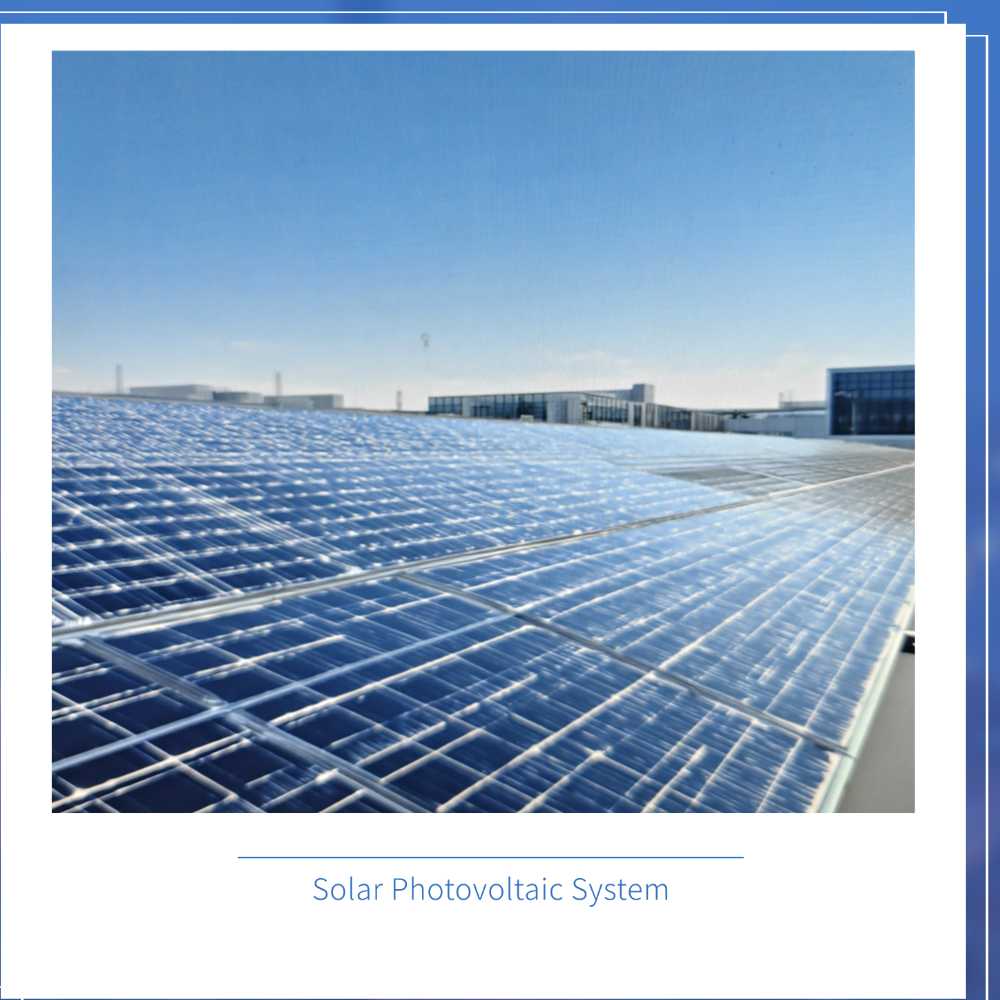
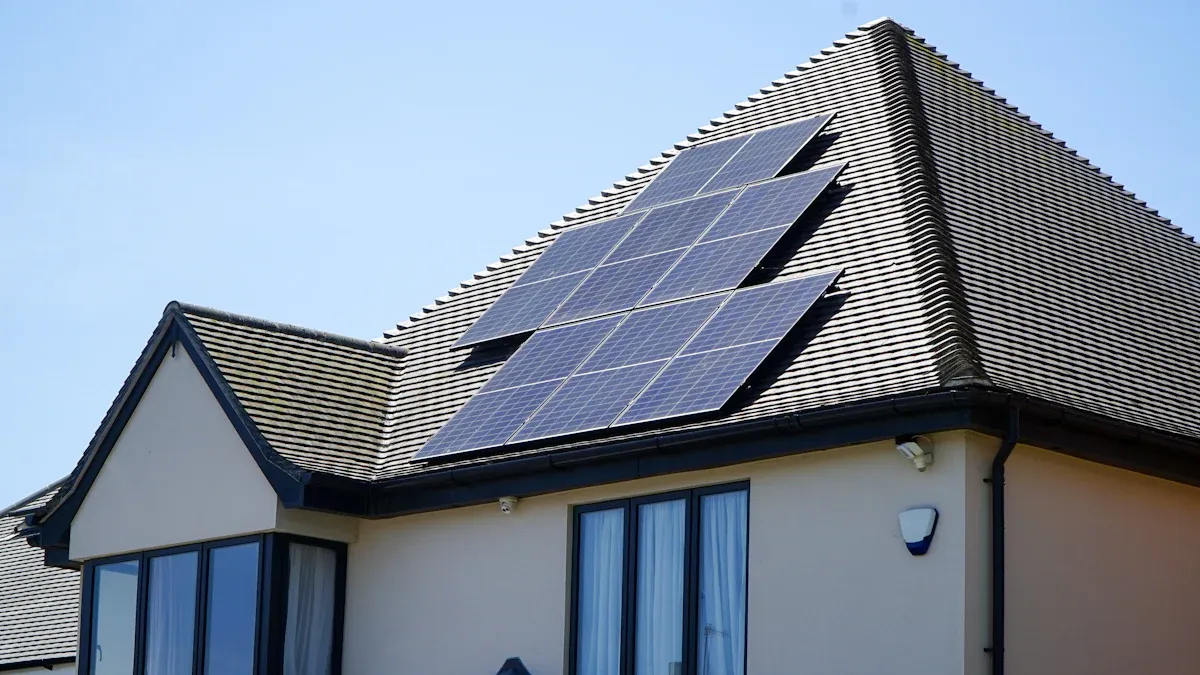
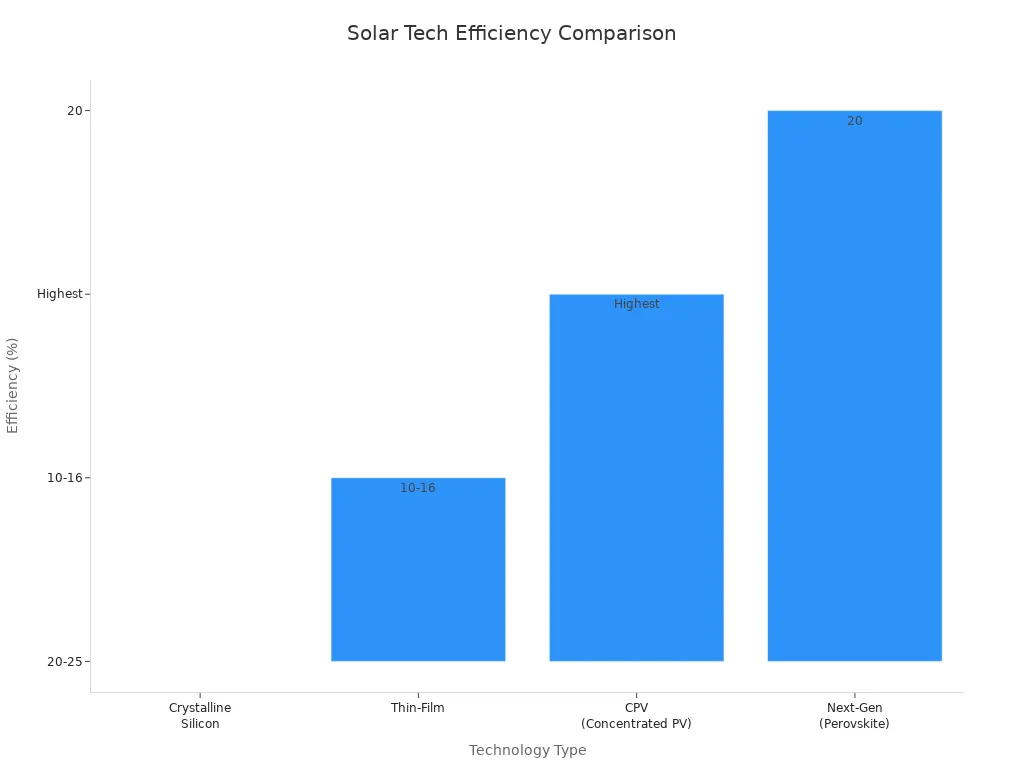
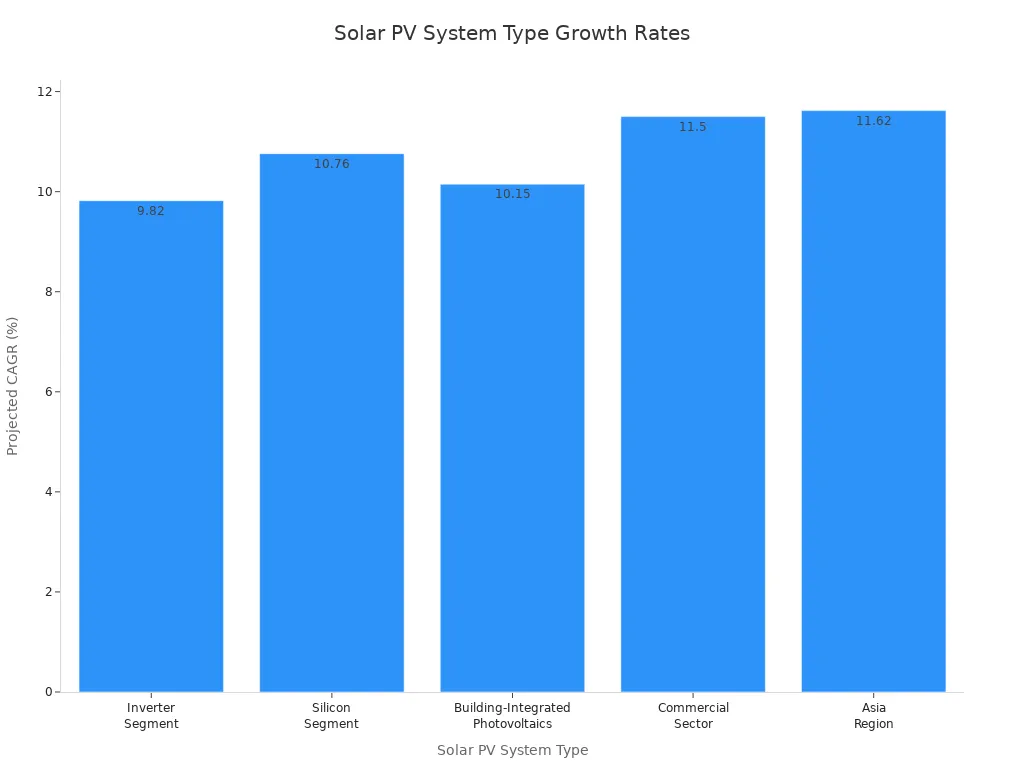
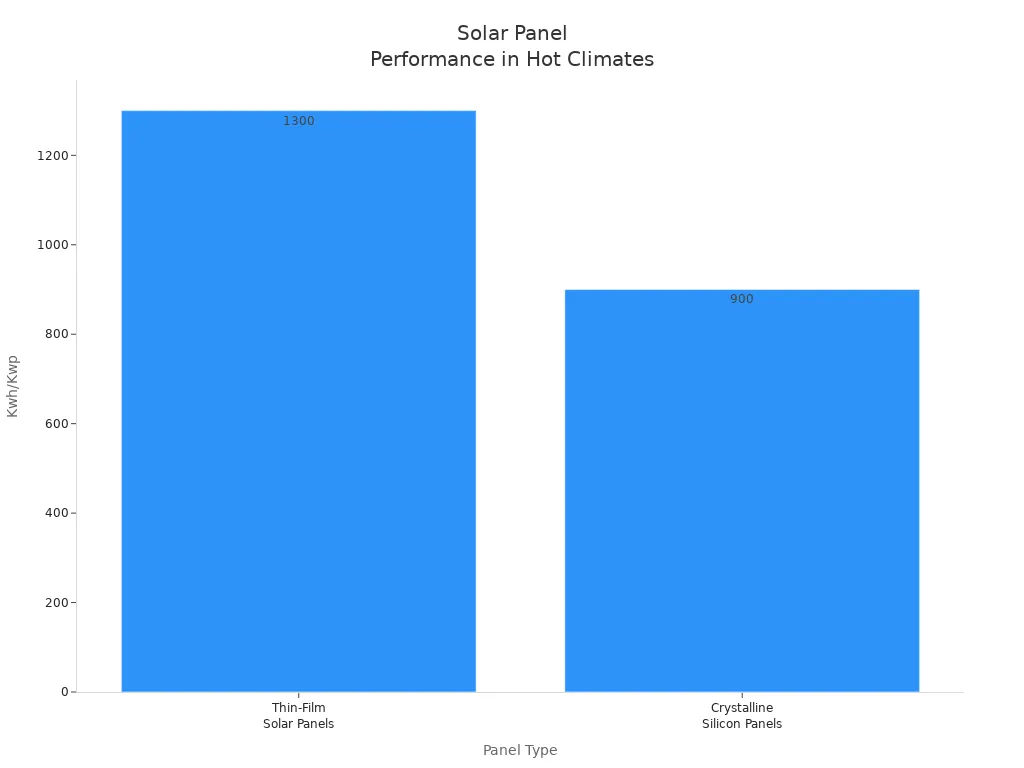
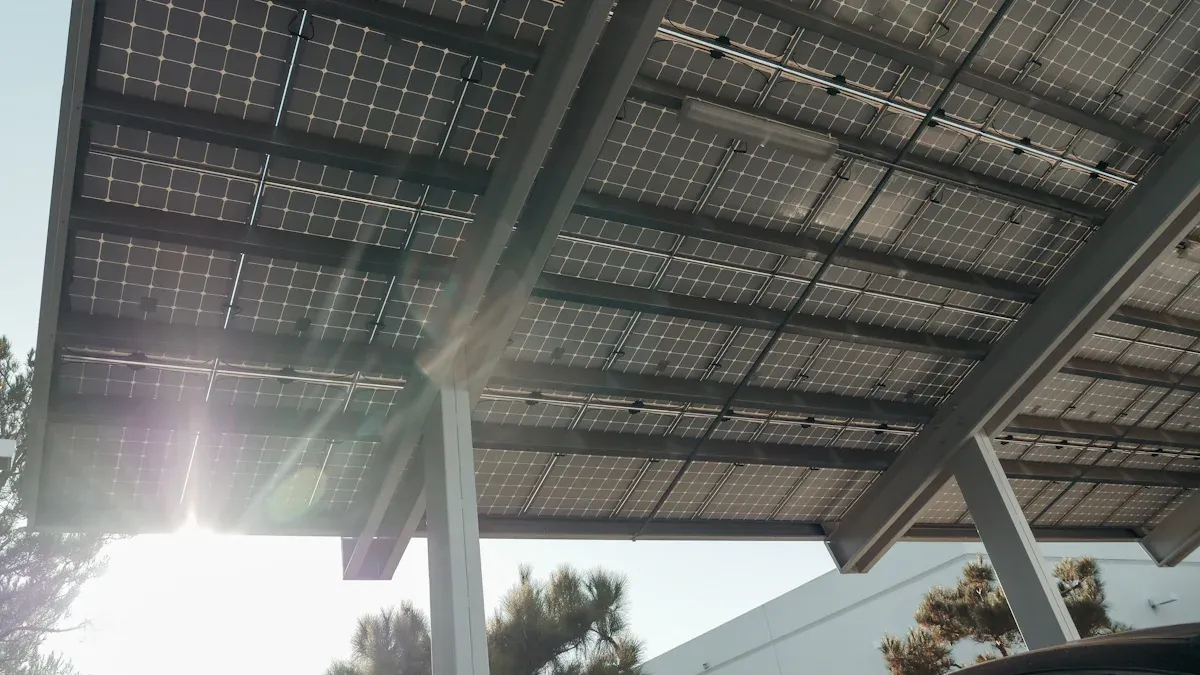

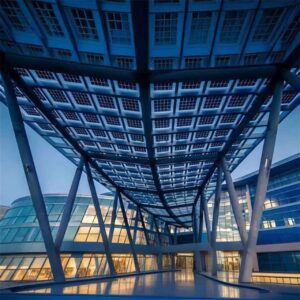
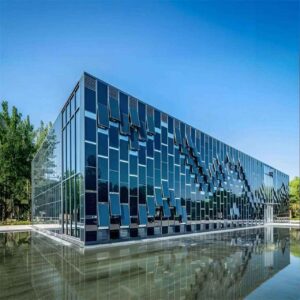
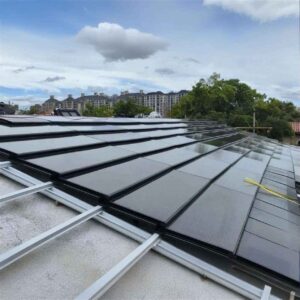
-300x300.jpg)
-300x300.jpg)
